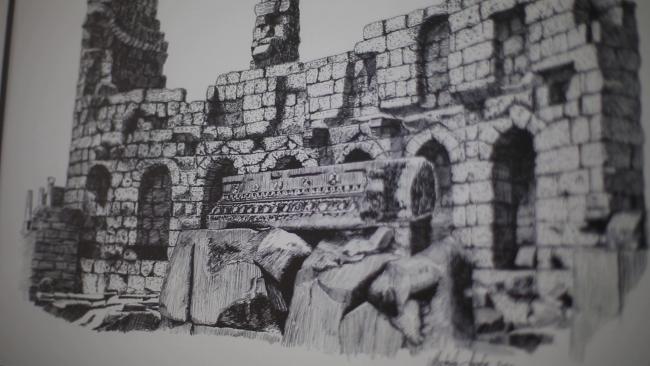leave press
The artist Mustafa Saritas is interested in the art of drawing in the style of engraving, and conveys in his works the buildings and fields that he considers a cultural and historical legacy for future generations. His drawing of the Hagia Sophia Mosque was chosen as the cover of the book "Acceptance of the Hagia Sophia Mosque", and describes Istanbul as "a golden cage with an open door."
Engraving is defined as the art of engraving. It began with engraving on various materials such as zinc, copper, and wood in the fifteenth century. The methods of engraving increased over time through the method of processing with oil pen on stone, or drawing on paper.
vlcsnap-2021-08-19-09h38m52s608.png
Engraving has been used as a method of documentation since the earliest times of human beings. The artist Saritaş is considered one of the most important contemporary painters in the style of engraving in Turkey. He works in his works by drawing historical buildings and squares in Istanbul. He also draws pictures using traditional and modern painting techniques.

Saritas takes advantage of the technological opportunities available in our time by drawing on the iPad tablet, describing the hand as the one that makes art and it does not matter how you draw, and the works remain permanent through archiving.
Saritaş talked about how he came to know the art of engraving, saying: "I graduated from the Faculty of Fine Arts at May 19 University. I also worked with different painting techniques for several years, then I switched to the art of painting in the style of engraving, which I became acquainted with when I visited the exhibition of the art of engraving (Şükrü Ertürk). Magnifying glasses were distributed to us when we entered the exhibition, which gave me the opportunity to see the details of the artworks, and I was affected by that and have followed the path of this art since then.”
vlcsnap-2021-08-19-09h38m23s737.png
Saritaş indicated that he applied the technique of engraving historical buildings and squares in his works: “Nowadays, the intensity of restoration work is increasing in Turkey, so I applied the technique of engraving historical buildings, in a manner that best reflects the historical structure, so I paid attention to the texture of stone, shadow and perspective of light. History reflective technologies.
He added, "The city's documents and clothes were drawn in general between 1700 and 1800, and we got to know Jean-Baptiste van Moore, who was called (the king's painter in the East) and his drawing of Ottoman clothes, as Antoine Ignace Meiling depicted through his drawings Historic Istanbul. , which has been preserved until it reached our day due to its engraving on metal, stone and wood, and it is believed that it is a kind of printing technique of that period.”
vlcsnap-2021-08-19-09h40m57s215.png
Saritaş expressed the possibility of preserving historical works further with the development of technological capabilities: “Our technological capabilities have developed today. To preserve it is to adapt it to modern technology. This results in feeding art with traditions. If we ignore modern technologies, we will not develop ourselves. If hand drawing is applied with digital drawing, then it is originally drawn by hand. We have to know how to adjust modern technology with the traditions of hand drawing.
Saritaş describes his passion and enjoyment of drawing historical buildings and squares in Istanbul: "I see Istanbul as a golden cage with an open door, in which there are places for drawing that my life is not enough for me to paint no matter how long it takes, for example when I go out to the Galata Bridge, I look around me and see Topkapi Palace, Eminonu, Karakoy and Ortakoy Mosque, I am very impressed by seeing the mosques in Istanbul."
vlcsnap-2021-08-19-09h38m06s229.png
Saritaş mentioned his drawing on the cover of the book “Acceptance of the Grand Mosque of Hagia Sophia,” saying: “I wanted to draw the Hagia Sophia Mosque when it opened for worship. In charge of her, it was a great honor for me to be chosen."
vlcsnap-2021-08-19-09h40m15s881.png
vlcsnap-2021-08-19-09h38m09s6821.png
